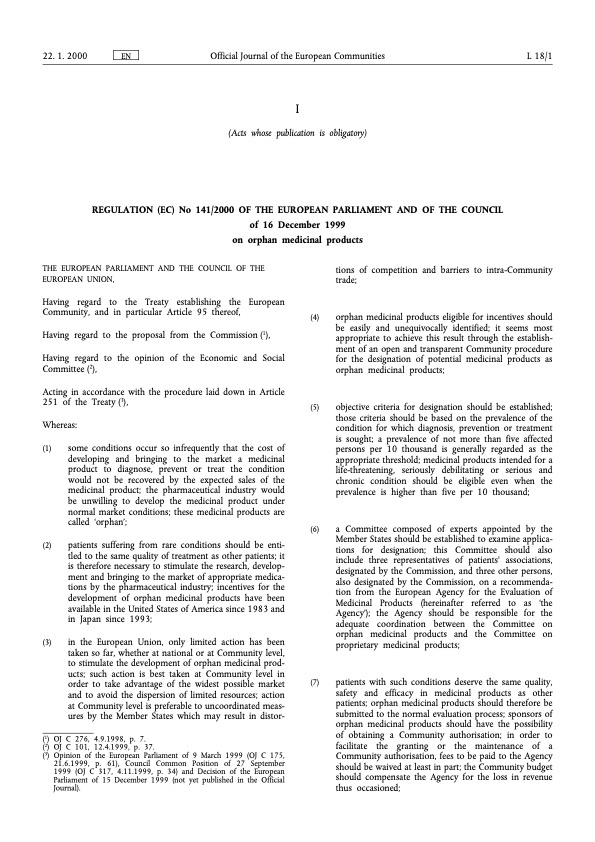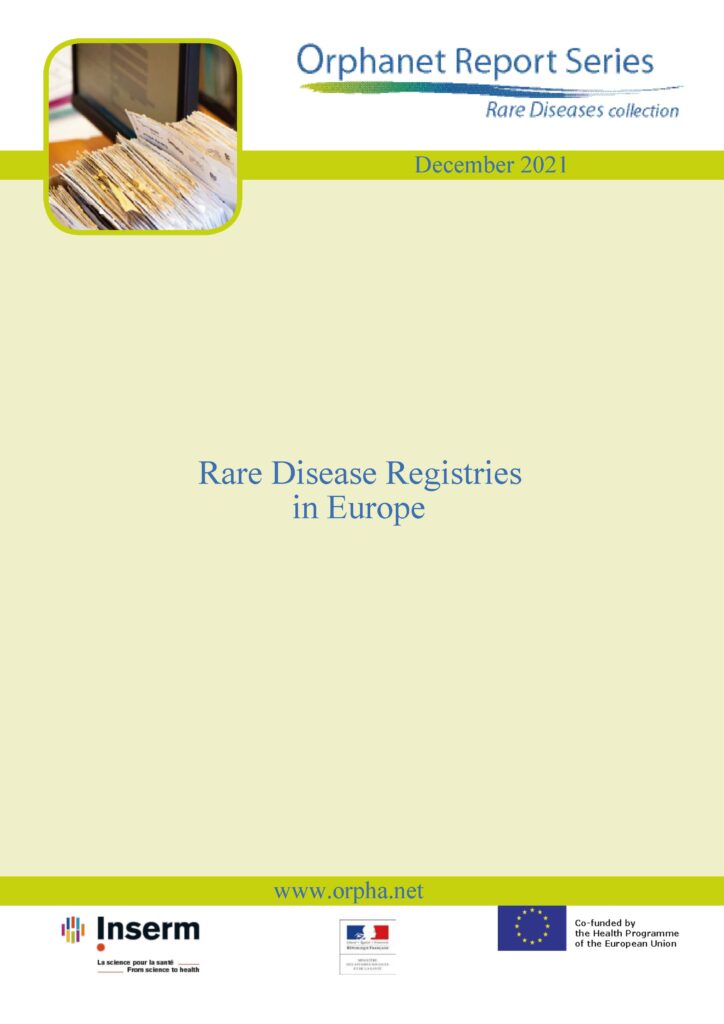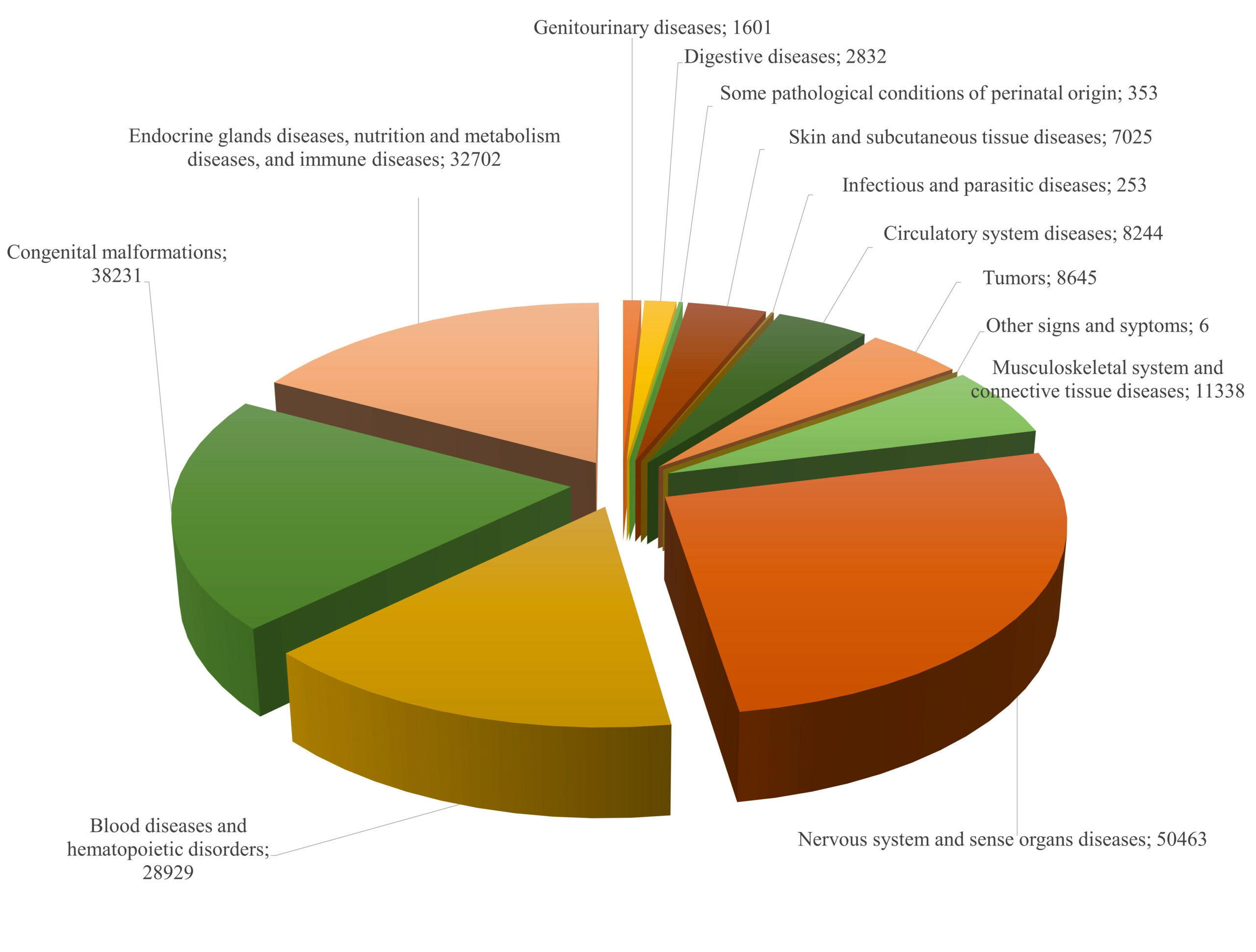1. RARE DISEASES AND WHO THEY AFFECT
Rocco Maurizio Zagari, Franco Bazzoli
A rare disease is a pathological condition that affects a relatively small number of people. Rare diseases are very heterogeneous, both in the etiopathogenesis (the study of the causes of a disease and their mechanism of action), and in the involvement of organs and systems of the human organism. Rare diseases can affect physical and/or mental abilities, and sensory and behavioural abilities (Taruscio, Cerbo et al. 1999). These are complex, often serious, degenerative, chronically invalidating pathologies; about a third of them reduce life expectancy to less than 5 years, while many others do not significantly affect life span if they are diagnosed early and treated appropriately. Finally, some conditions allow one to carry on a normal life even in the absence of treatment (Salerno et al. 2005).
Rare diseases represent a group of pathologies transversal to all the nosological classification systems currently in use. The defining criterion, in fact, is neither etiological nor topographical, but epidemiological, and in fact somewhat arbitrary: a disease that is rare today may not be rare tomorrow and vice versa. For example, when AIDS was first discovered it was considered a rare disease because it was not widespread. Afterwards, with the improvement of the diagnosis and the development of drugs that, though effective in reducing mortality, were not able to eliminate the virus, the number of patients grew dramatically, and today, AIDS is no longer a rare disease (Field, Boat et al. 2010). If a non-curative treatment can make a rare disease “common”, then conversely, an effective prevention can make a common pathology “rare”. This is, for example, the case of many childhood infections that were once common, such as mumps and rubella, and that thanks to vaccinations have now become rare; the opposition of parents to vaccinating their children could however reverse this situation.
All this should have discouraged the classification of the rare diseases group, which instead however is motivated by some clinical and care characteristics that are common to the individual pathologies, such as the diagnostic difficulty, the poor therapeutic options, the chronic course and often disabling outcomes (Stoller 2018).
1.1. Definition of rare disease
There are several terminologies to indicate a rare disease, including orphan disease, neglected disease, and specialized disease. The term orphan disease derives, for example, from the name of the drugs used for the treatment of rare diseases, which are called “orphan drugs” since under normal market conditions they would not be marketed, as they are unprofitable for their poor use in clinical practice. However, the term “rare disease” is the most used worldwide for the desire to clearly and formally distinguish rare diseases from common diseases (Richter et al. 2015).
The definition of rare disease is generally based on the low prevalence of the disease in the general population; the incidence is an epidemiological criterion seldom used, if not only for the definition of rare tumours (Richter et al. 2015). The prevalence, i.e. the proportion of sick individuals over a given period of time, rather than the incidence, which indicates the percentage of new sick individuals per year, more appropriately reflects how frequent a disease is, and is also an easy measure to evaluate the spread of a disease in population subgroups.
Currently, there is no universal definition of rare disease, since there is no international prevalence limit accepted by all countries to define a rare disease; this, however, would not even be appropriate considering the demographic, political and financial differences that exist between countries. Thus the definition of rare disease varies in different states, and a disease defined as rare in one state may not be rare in another. The prevalence limits set by regulatory authorities to define a rare disease vary from 0.5 cases per 10,000 people in Korea to 7.6 cases per 10,000 people in China (Richter et al. 2015). In 1999, a European Union law established the definition of rare disease to be adopted in Europe: a disease with a prevalence of no more than 5 cases per 10,000 people (Regulation EC, 2000).

In reality, the regulatory authorities of some countries, such as the United States, Australia and Japan, unlike the European community, have not explicitly specified a prevalence limit, but have indicated what the maximum number of people affected must be in order to define a disease as “rare”. For example, in the United States, a disease is considered rare if it affects less than 200,000 people, which based on the population estimate means less than 6.5 out of 10,000 people, while in Japan a disease must affect less than 50,000 people, that is, less than 4 people out of 10,000 (Liu et al. 2010).
Public or private bodies and associations can adopt different prevalence limits to define a rare disease, even within the same country. It has been observed that private bodies and associations, such as companies that activate health insurance, indicate lower prevalence limits than public associations or patient associations (Richter et al. 2015). This clearly reflects the different needs and competences of the different types of entities or associations; when it comes to defining a rare disease, the main interest of private bodies, addressed to the costs related to the treatment of the disease, is certainly not the same as for patient associations, whose main objective is to have easy access to effective treatments and cures. This would explain why private entities or associations tend to give a more stringent definition of rare disease than other organizations.
1.2. How many rare diseases are there and how many people do they affect?
The epidemiology of rare diseases is still poorly understood today. There are numerous types of rare diseases, some of which have not been named yet; it is not clear what the total number of people affected by rare diseases is, nor their exact prevalence and incidence, both individually and overall, in different countries (Auvin et al. 2018). To date, there is a lack of prevalence and incidence studies in the general population; there are many problems in the identification and coding of rare diseases, as well as in the collection of data from patients affected by them (Rodwell, Aymé et al. 2015). For example, most rare diseases have so far been excluded from the International Classification of Diseases (ICD), with consequent problems in their identification in health systems and in obtaining information on the corresponding morbidity and mortality. However, the coding problem will be partially solved by the new ICD-11 Classification, presented by the World Health Organization in June 2018 and coming into force from January 1, 2022, in which about 5,000 rare diseases have been included, each of which will have a specific ICD-11 code (WHO, 2018). Rare diseases are also not easily identifiable in health systems due to factors that belong to their very nature, such as the heterogeneity of the pathologies, the poor accuracy of the diagnostic tests available today, and the presence of numerous synonyms, acronyms, and groups of pathologies.
To improve our knowledge on the epidemiology of rare diseases, the European Commission of Rare Diseases Experts (EUCERD, European Union Committee of Experts on Rare Diseases), replaced in 2014 by the Group of Experts of the European Commission of Rare Diseases (CEG-RD, European Commission Expert Group on Rare Diseases), recommended the establishment at the national and international level of registries and databases for rare diseases (EUCERD Core Recommendations on Rare Disease Patient Registration and Data Collection) (Rodwell, Aymé 2014).
There are currently 753 rare disease registries in Europe (69 European, 69 international, 535 national and 80 regional); almost all of the registers concern diseases for which there is a medical treatment in development, or already on the market, and therefore they also collect information on the efficacy and tolerability of orphan drugs, such as the Rare Disease Registries in Europe (Orphanet 2019b, last ed. December 2021). Most of the registries are located in academic institutions and are integrated into the national health system, while others are managed by pharmaceutical companies or patient associations.

The European Platform for Rare Disease Registries (EPIRARE) recently evaluated the possibility of creating a European platform for the registration of patients with rare diseases, similar to the Global Rare Diseases Registry (GRDR, subsequently called RaDaR, the Rare Diseases Registry Program) of the National Institute of Health in the United States (Rodwell, Aymé et al. 2014).
Currently, the most important source of information on the epidemiology of rare diseases in Europe and worldwide is Orphanet, the reference portal of the European Union, founded in 1997 in France by the Institut National de la Santé et de la Recherche Medical. Orphanet provides an updated list of known rare diseases twice a year, and a global estimate or, when not available, an estimate at the European level, of the prevalence, incidence or number of cases for each disease. For the collection of data, Orphanet uses various sources of information, such as disease registers, national and international health authorities and bodies, bibliographic searches on electronic databases (e.g. MEDLINE®), and expert reports. Therefore, the epidemiological data provided by Orphanet cited here are only estimates, and not correct data.
According to the latest Orphanet report, the 2017 Activity Report, there are 6,151 rare diseases worldwide, a number that, according to the World Health Organization, could possibly reach 7,000 or 8,000 (Orphanet 2018). These numbers are clearly destined to grow with the advance of knowledge and, in particular, with advances in diagnostics and genetic research. According to Orphanet data, most rare diseases are “extremely” rare, since they affect only a few people or a few families, while the others affect hundreds or even thousands of people. Currently, the most frequent rare diseases in the world seem to be Down Syndrome, neural tube closure anomalies, labio/cleft palate, endocrine gland tumours and cutaneous Lupus Erythematosus (Orphanet 202019a). The total number of rare disease patients has been estimated to be around 27-36 million in Europe and 25 million in the United States, with a prevalence in the general population of 6-8% (Field, Boat 2010).
Rare diseases, individually infrequent by definition, when considered all together represent a common condition that affects tens of millions of people around the world. These numbers mean that rare diseases represent an important public health problem today.
1.3. Reporting rare diseases in the western world: the case of Italy
In 2001, the National Institute of Health in Italy, the Istituto Superiore di Sanità, identified 495 rare diseases, for which the exemption from payment of the co-pay fee (known as the “ticket”) was activated (Ministerial Decree 279/2001). Since then, more than 100 diseases have been added to the list (Ministerial Decree 15/2017). In addition, in 2001, a national system for the surveillance and monitoring of rare diseases was established in Italy through the National Register of Rare Diseases of the Istituto Superiore di Sanità, the regional and interregional registers, and the health units specialized in the diagnosis and treatment of rare diseases, identified by individual regions. The National Rare Disease Registry periodically receives the data of patients suffering from rare diseases from the 20 regional registries existing in Italy, which in turn receive them from the Health Presidia at the time of the co-pay fee exemption certification (National Plan for Rare Diseases 2013-2016 of 2014). The portal of the National Centre for Rare Diseases (see some reference links) provides information on rare diseases and on the national network of rare diseases in Italy.
Unfortunately, the regional registers, and therefore also the National Rare Disease Register, monitor only ticket-free rare diseases, and not rare diseases as a whole. Furthermore, the regional registers currently cover just over half of the Italian population (Taruscio et al. 2017).

In 2017, the regional registers reported the presence in Italy of 236,460 cases of rare diseases out of a population of 44,622,658 inhabitants, with an average prevalence of 0.53%; projecting the prevalence of 0.53% to the entire Italian population of 60,589,445, it is possible to estimate a number of people with rare diseases in Italy of 321,124; to this estimate, we must add about 20% of people with rare disease who resort to centres outside the region, thus reaching 385,348 cases. Since, as previously mentioned, the regional registers report only ticket-exempt diseases, it is assumed that the total number of people with rare diseases in Italy may be 50-100% higher than the estimation, and therefore might lie between 578,000 and 770,000 cases, meaning 7.5-10 people out of 1,000 residents, with a prevalence ranging from 0.95% to 1.27%; of these patients, around 160,000 would be children or adolescents (Astolfo, Porchia 2018).
According to the data of the 3rd Report of the National Registry of Rare Diseases, the most frequent rare diseases in Italy are diseases of the nervous system and sense organs, congenital malformations and diseases of the endocrine glands, and nutritional, metabolic, and immune disorders (Fig. 1) (Taruscio et al. 2017). These diseases represent about 80% of the rare diseases reported in Italy.
1.4. Who is affected by rare diseases?
Most rare diseases are genetic diseases; other diseases are caused by environmental factors, such as bacterial or viral infections, toxins, chemicals, radiation, or by autoimmune reactions (Field et al. 2010). Rare diseases can affect anyone, at any age; however, the exact demographic distribution of rare diseases is not well known (Field, Boat 2010). Although rare diseases are very often genetic, in Italy the majority of those affected are adults, while only about 25% of the subjects with rare diseases are children or adolescents (Astolfo, Porchia 2018). In other words, only 1 in 4 individuals with a rare disease are under the age of 18, while 3 out of 4 are adults. This is an interesting fact because in the common perception, partly influenced by news from the mass media, rare diseases are largely associated with children and adolescents. Additionally, in Italy, the most frequent rare diseases in adults are those of the nervous system and sense organs and of the blood and hematopoietic organs, while in children and adolescents congenital malformations and diseases of the endocrine glands as well as nutritional diseases, metabolism and immune disorders are more frequent (Astolfo, Porchia 2018). As for sex, rare diseases in Italy seem to affect males and females similarly, although there seems to be a slightly higher prevalence of women (52.4%) than men (47.6%) (Astolfo, Porchia 2018).
1.5. Conclusions
Rare diseases are extremely heterogeneous diseases, the defining criterion of which is neither etiological or topographical, but epidemiological. A disease is defined as “rare” when it has a low prevalence, but the prevalence limits vary from country to country, so there is no universal definition of a rare disease. Therefore, a disease defined as “rare” in one country may not be rare in another, just as a disease that is rare today may not be rare tomorrow and vice versa. Although the epidemiology of rare diseases is not well known, we know that there are thousands of rare diseases which, collectively, are not so rare, since they affect tens of millions of people around the world. There is no doubt that, due to their large number, rare diseases today represent a real public health problem.
It is certainly necessary to improve the identification, coding and data collection tools regarding rare diseases, and the coverage of the population by national registers, in order to have more precise estimates on epidemiology, i.e. on the number of people affected, and on the prevalence, incidence and demographic distribution of rare diseases, in Italy and worldwide.


